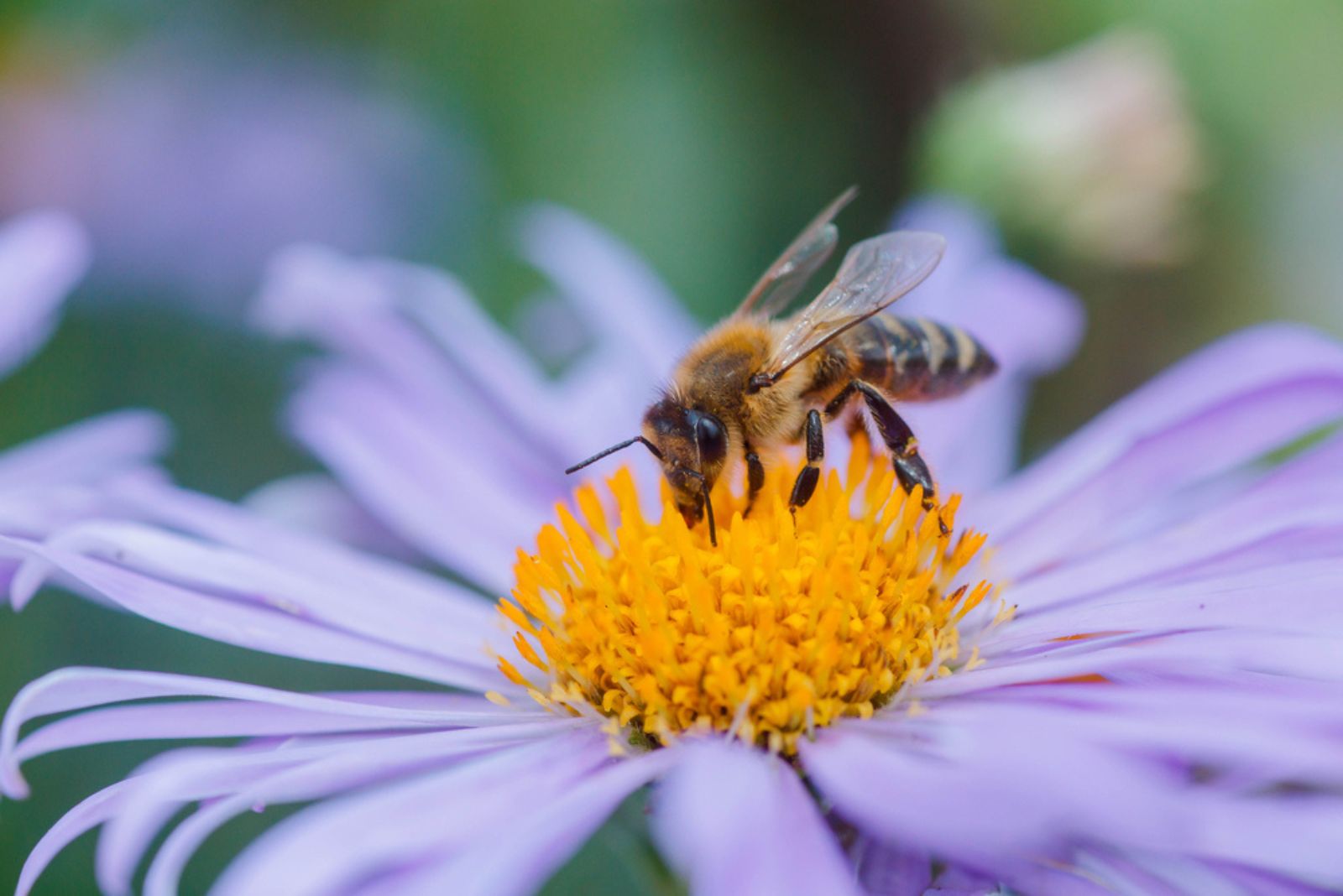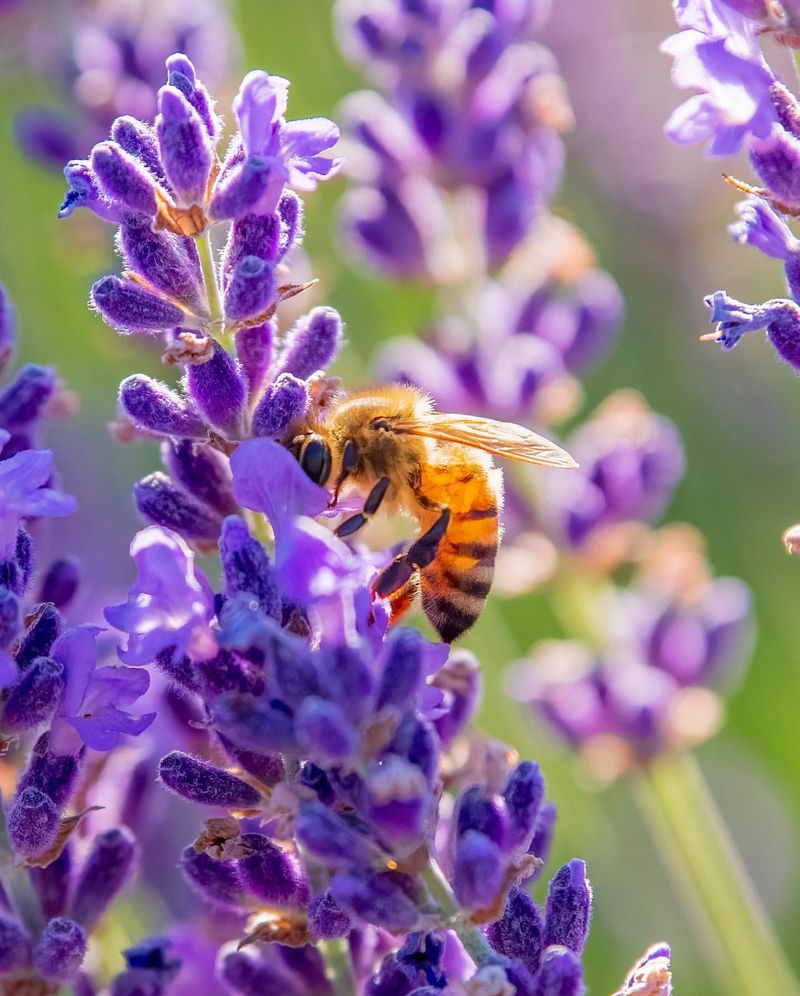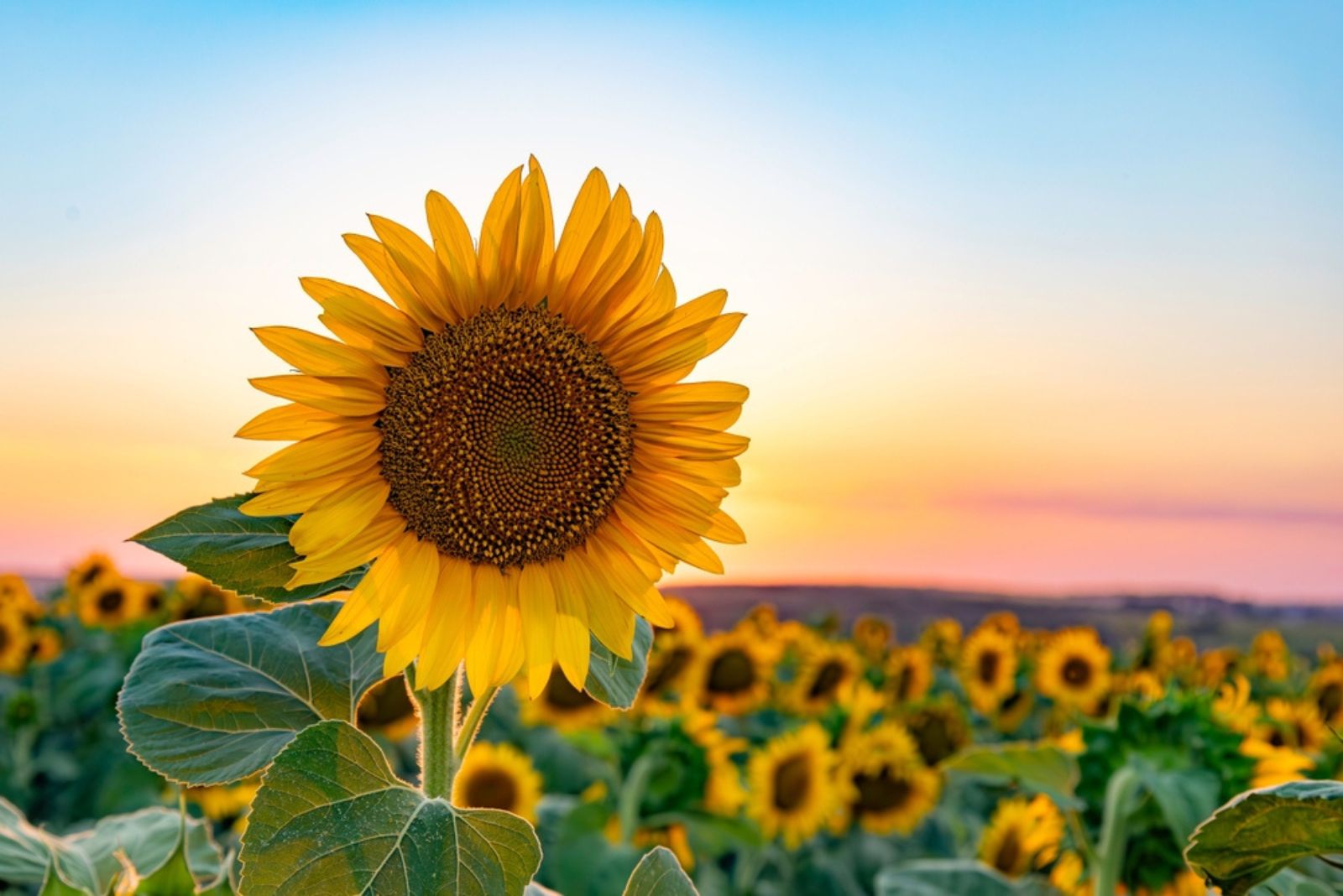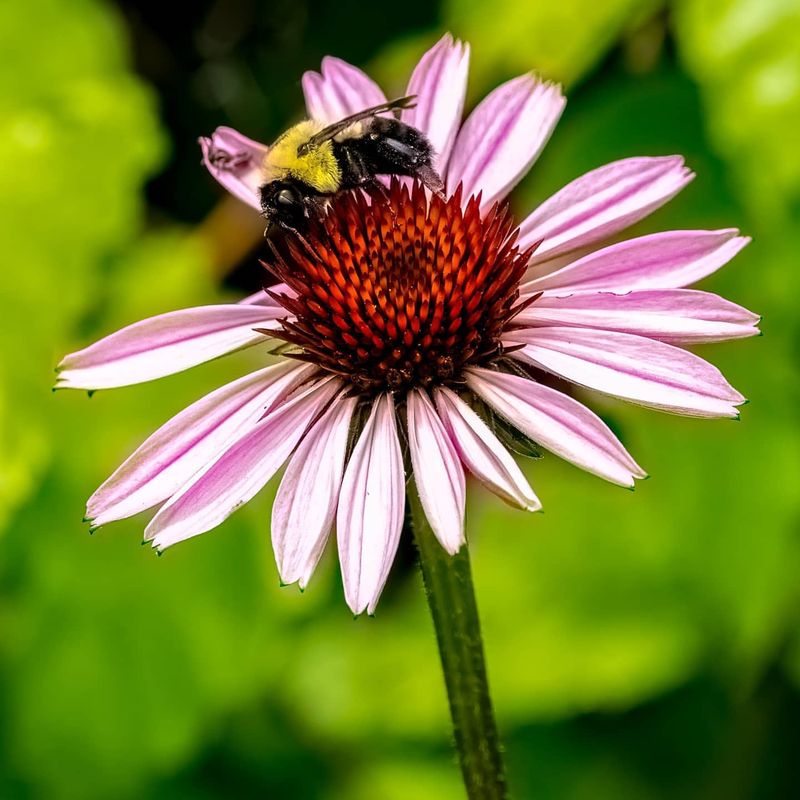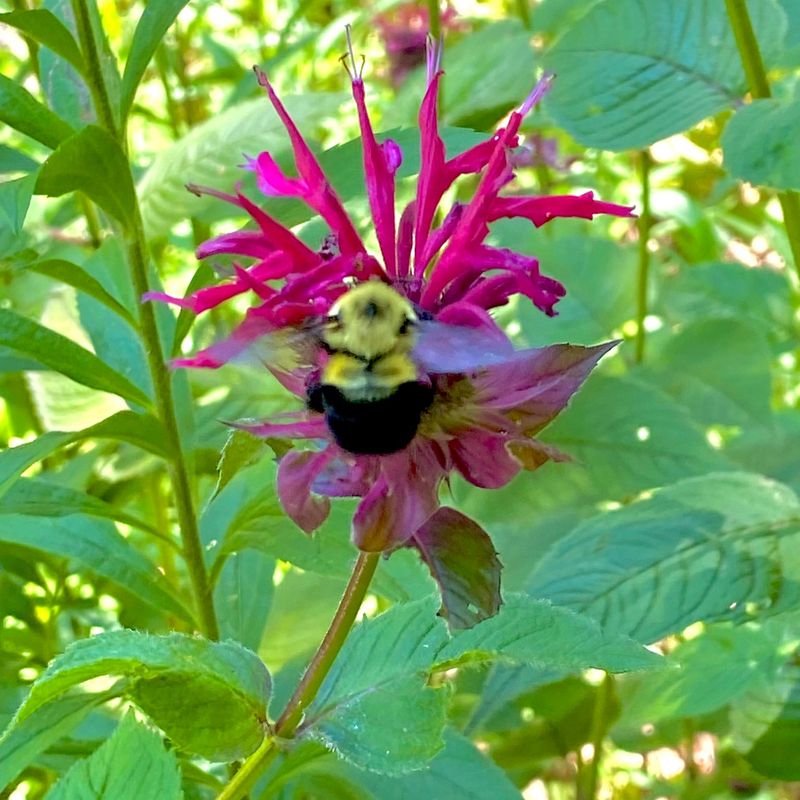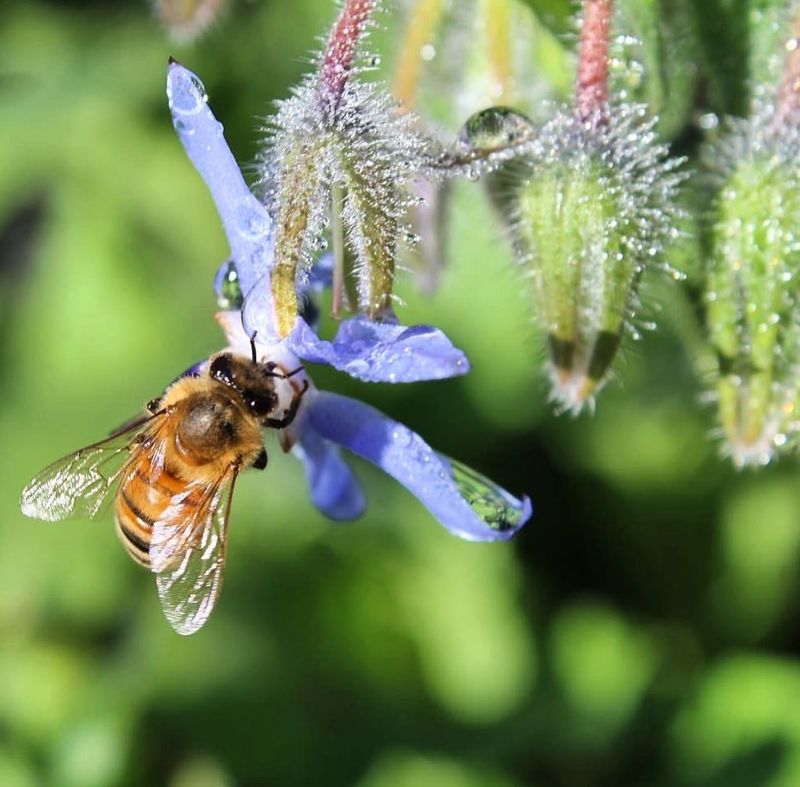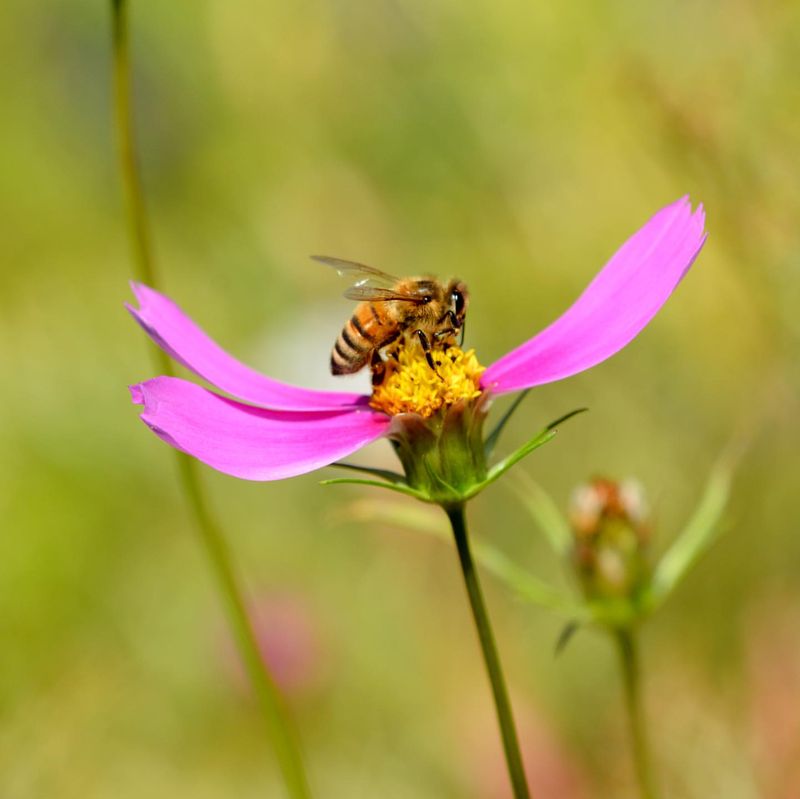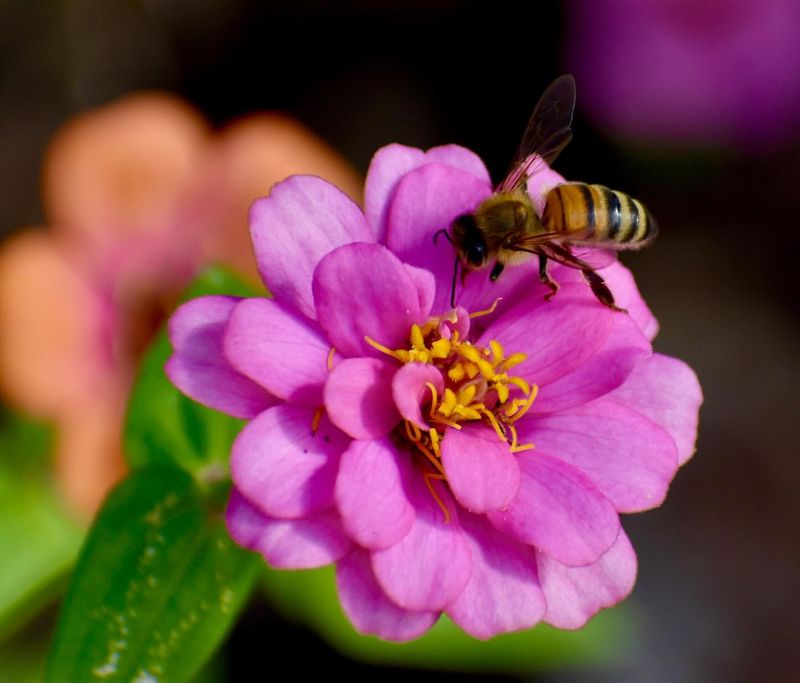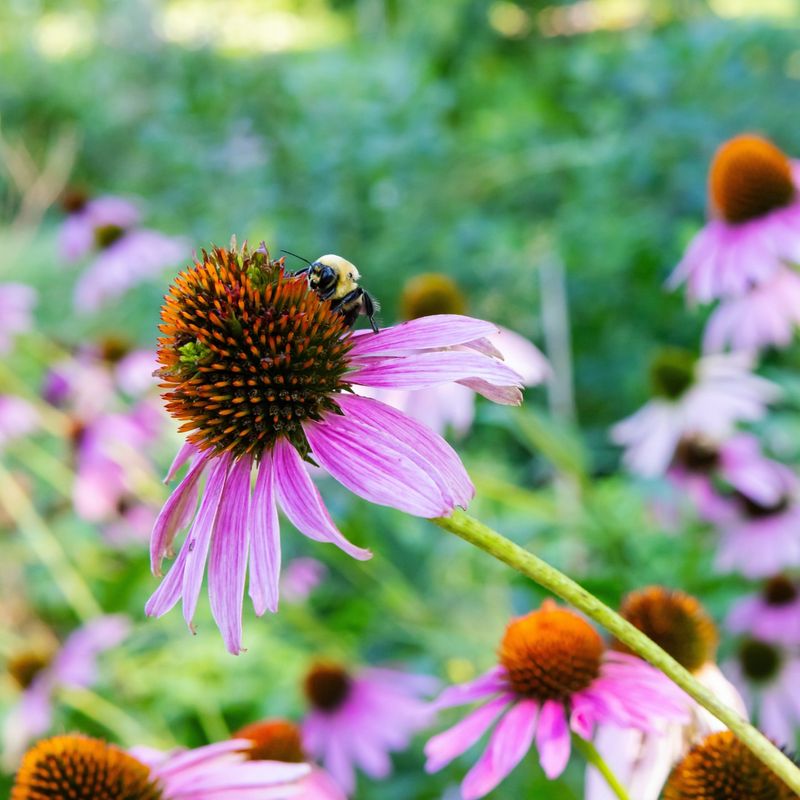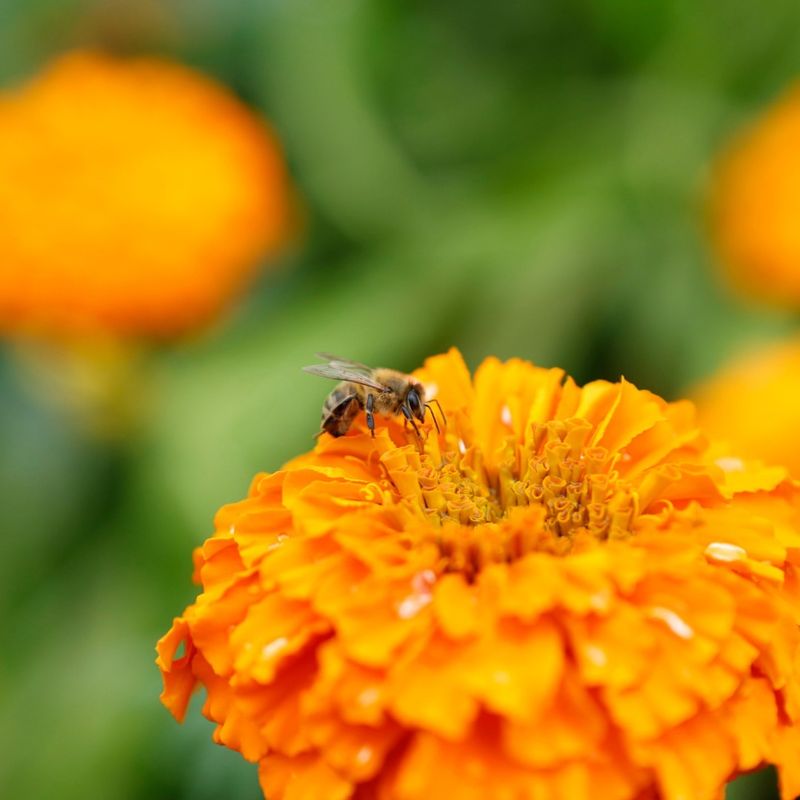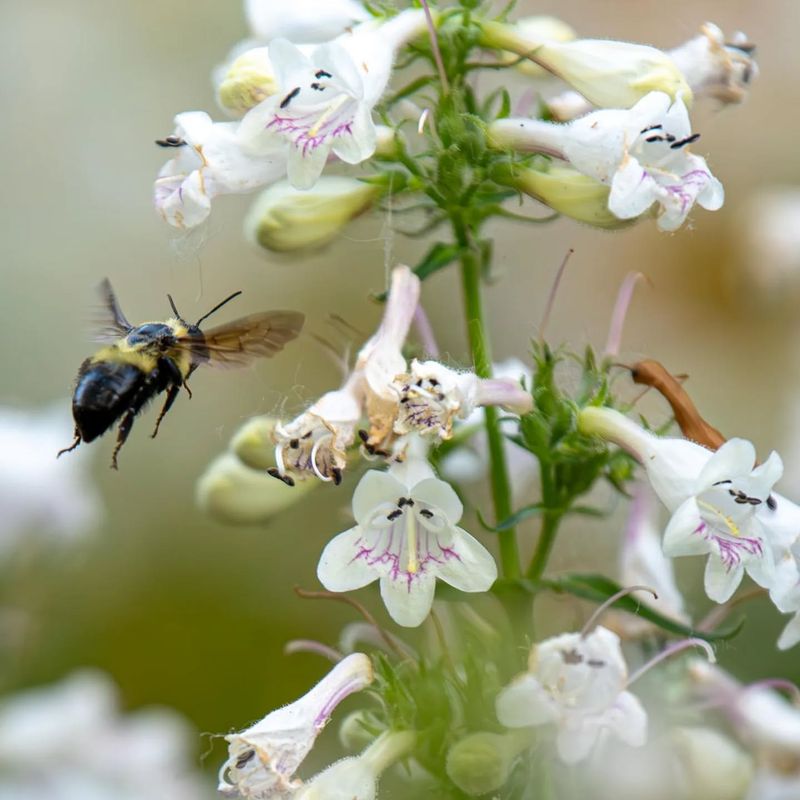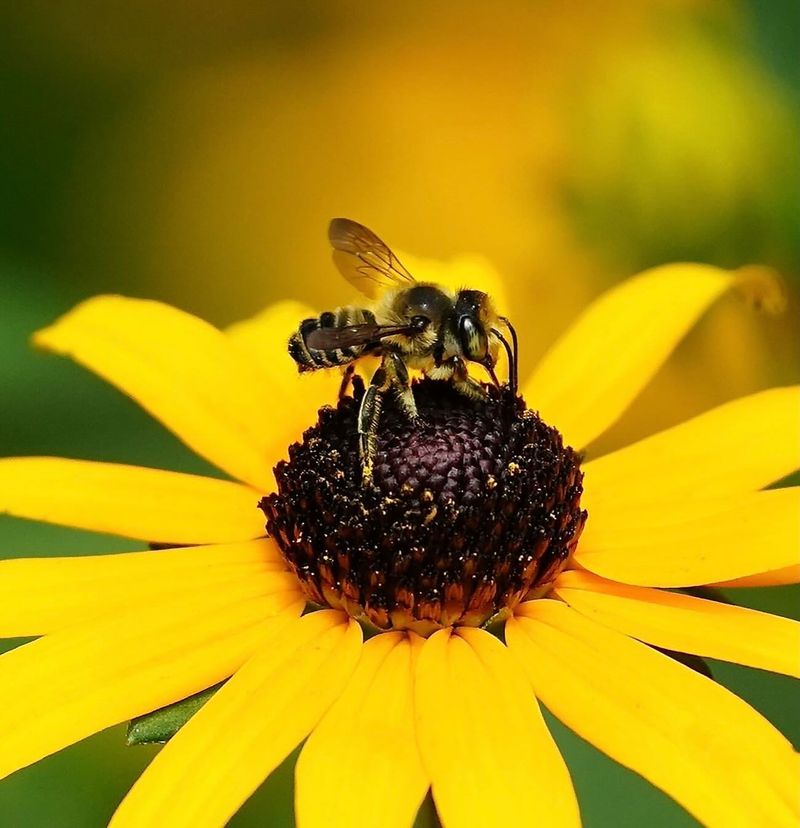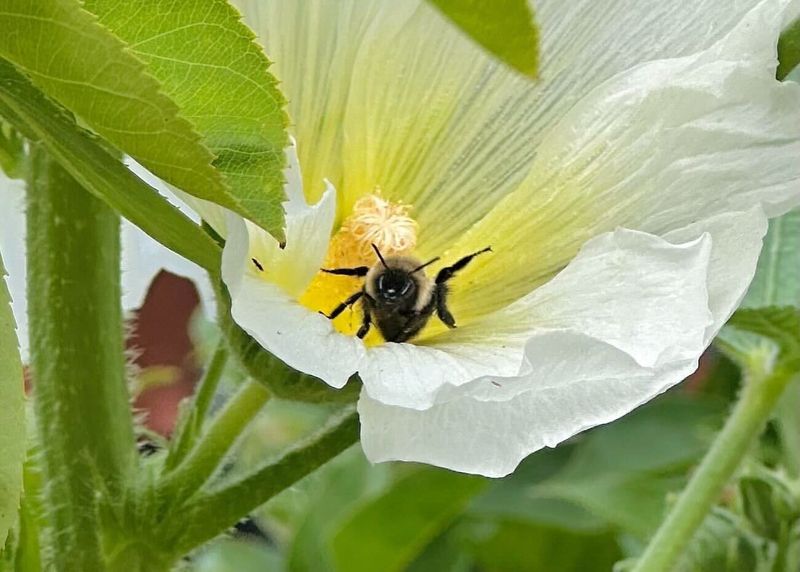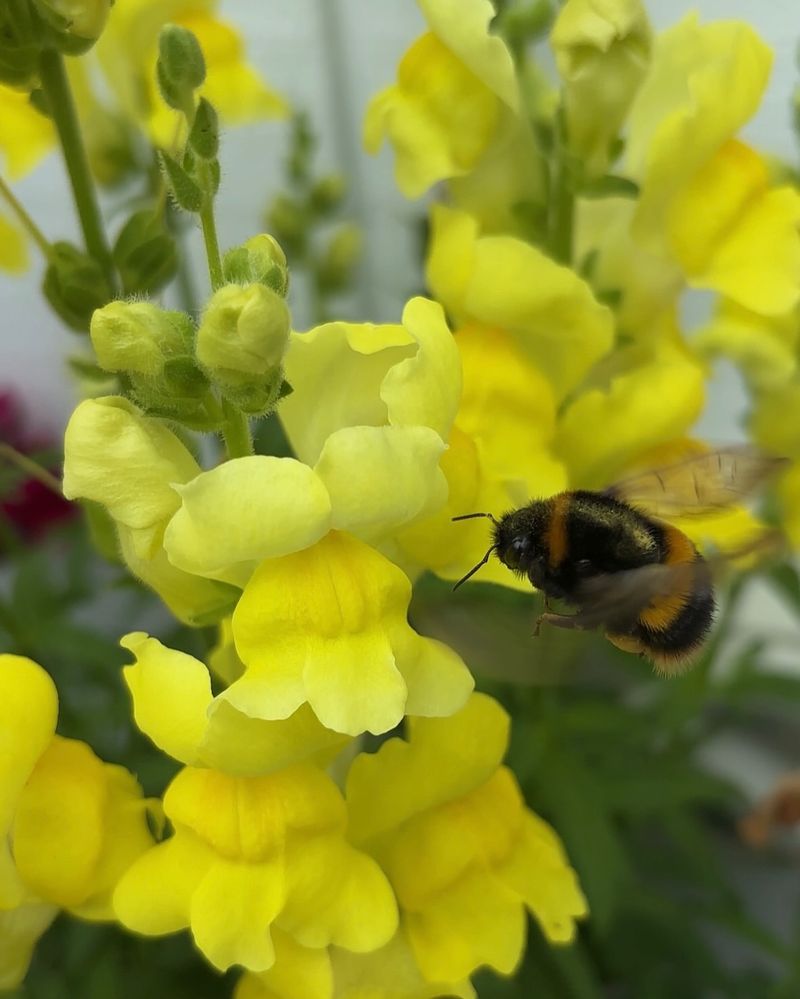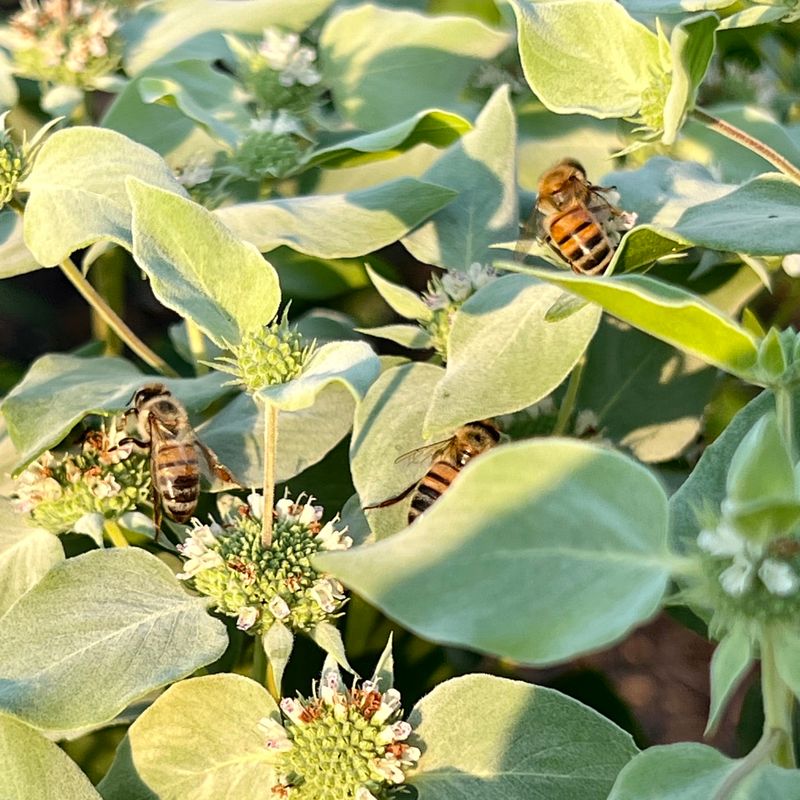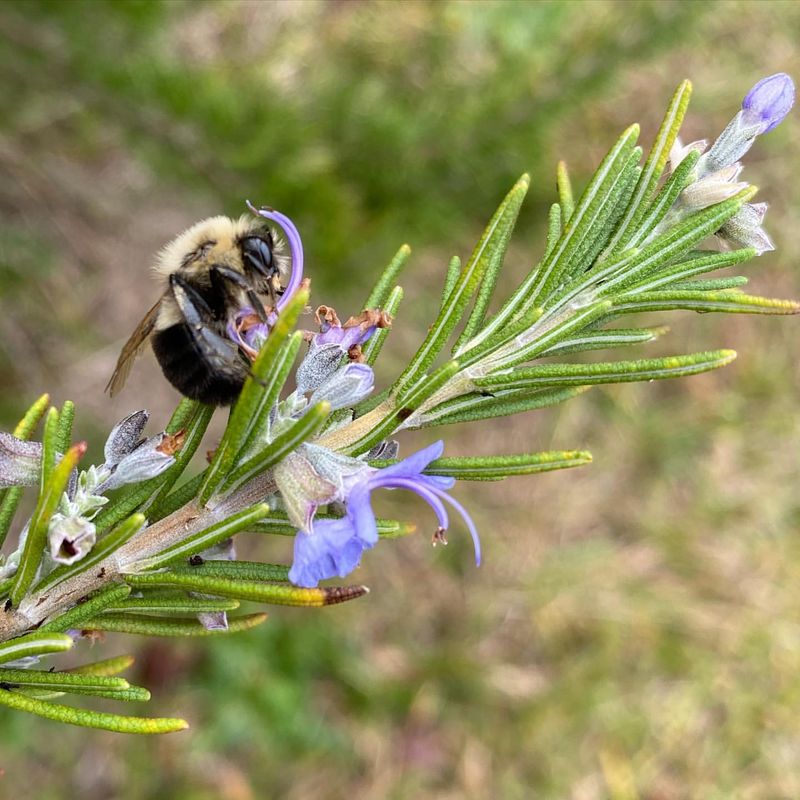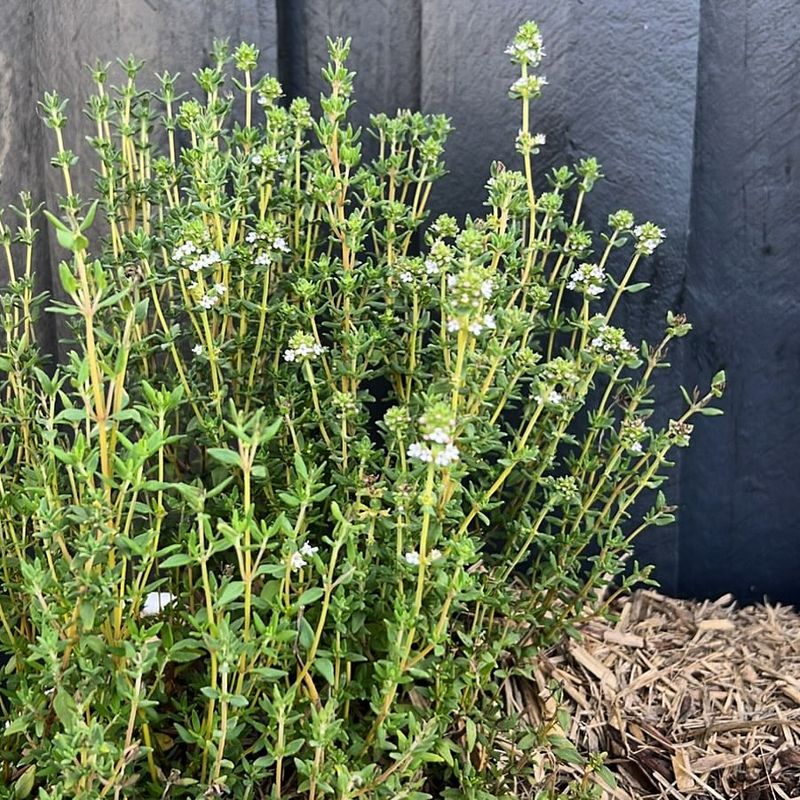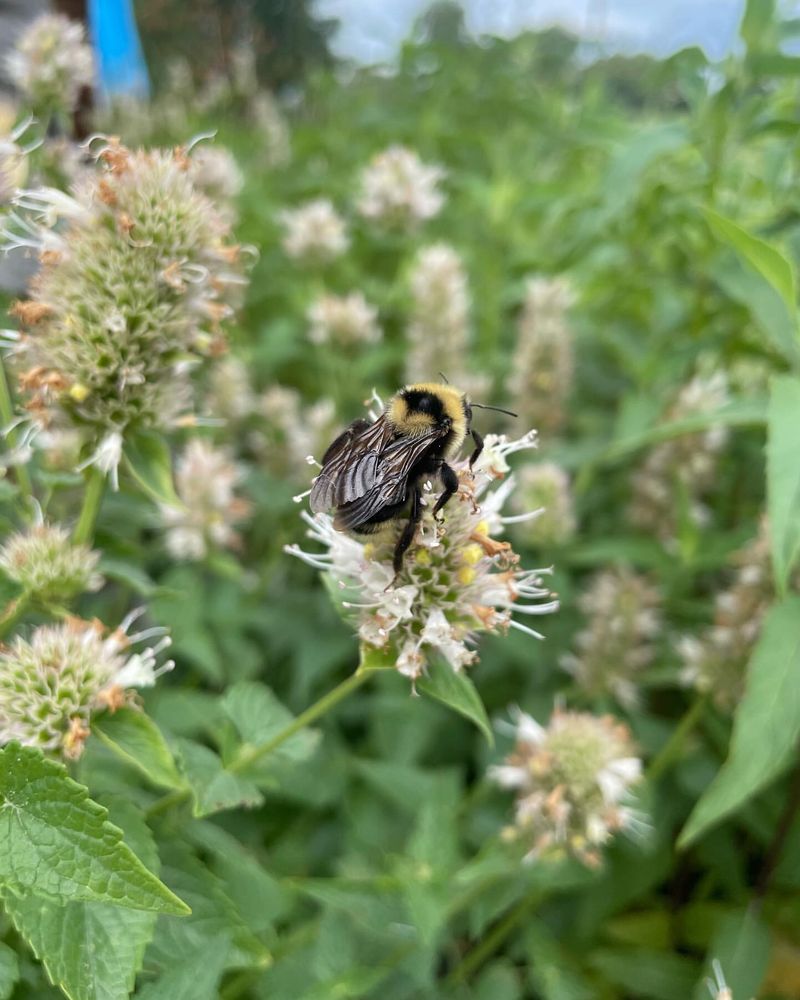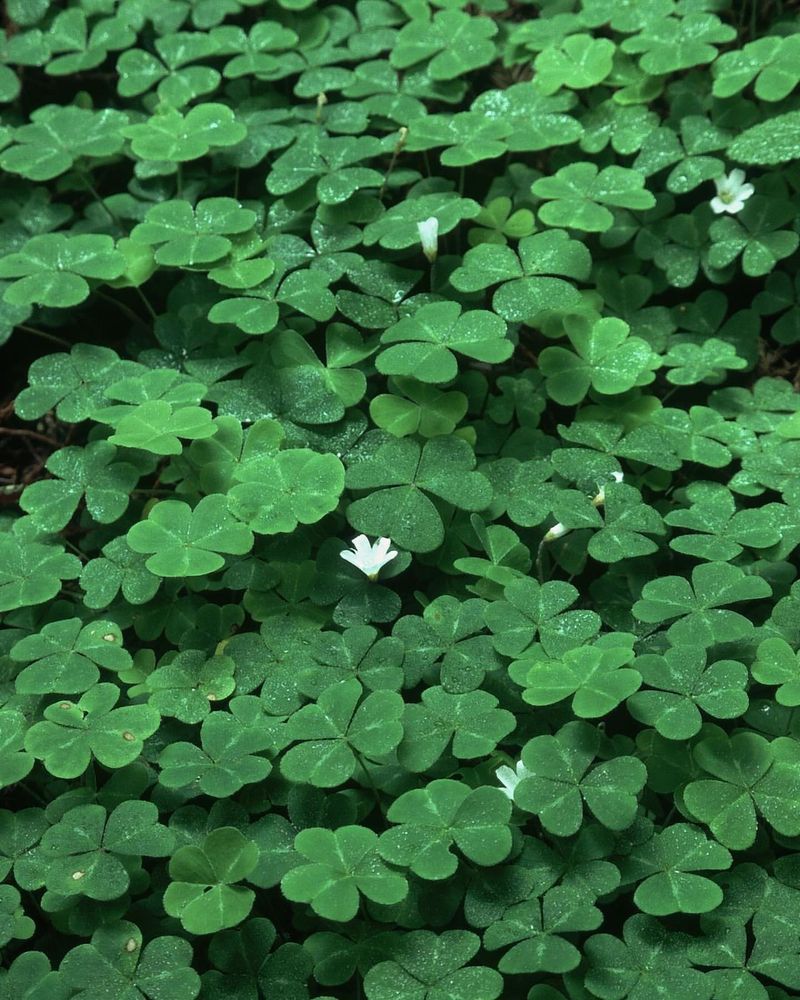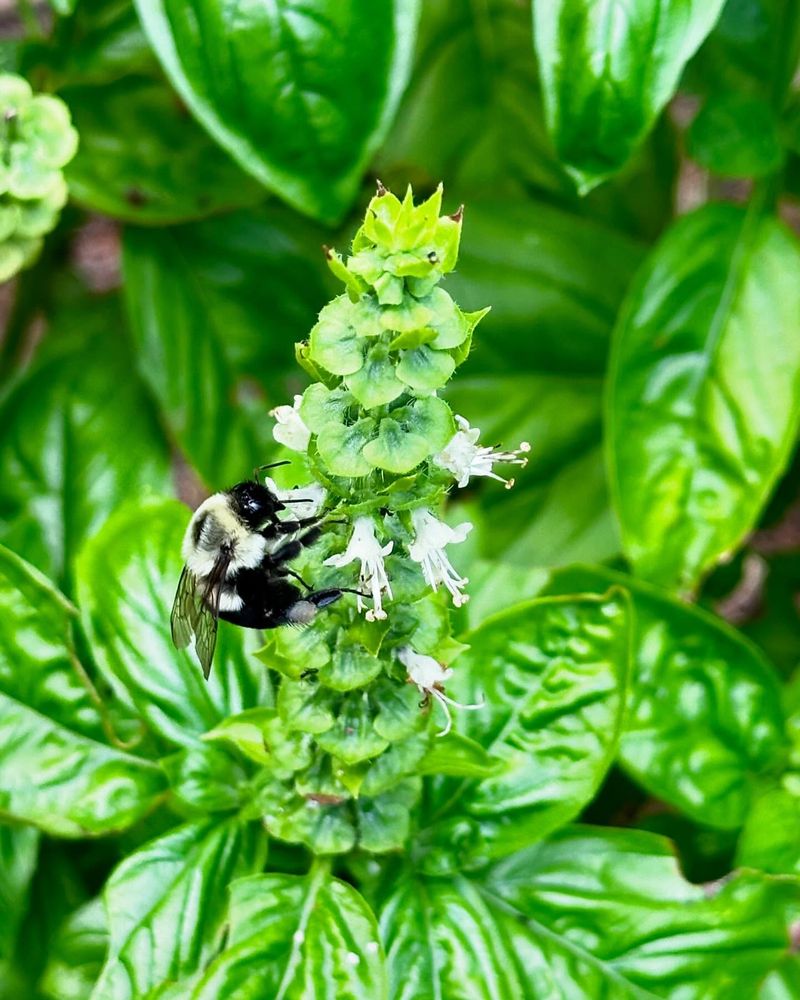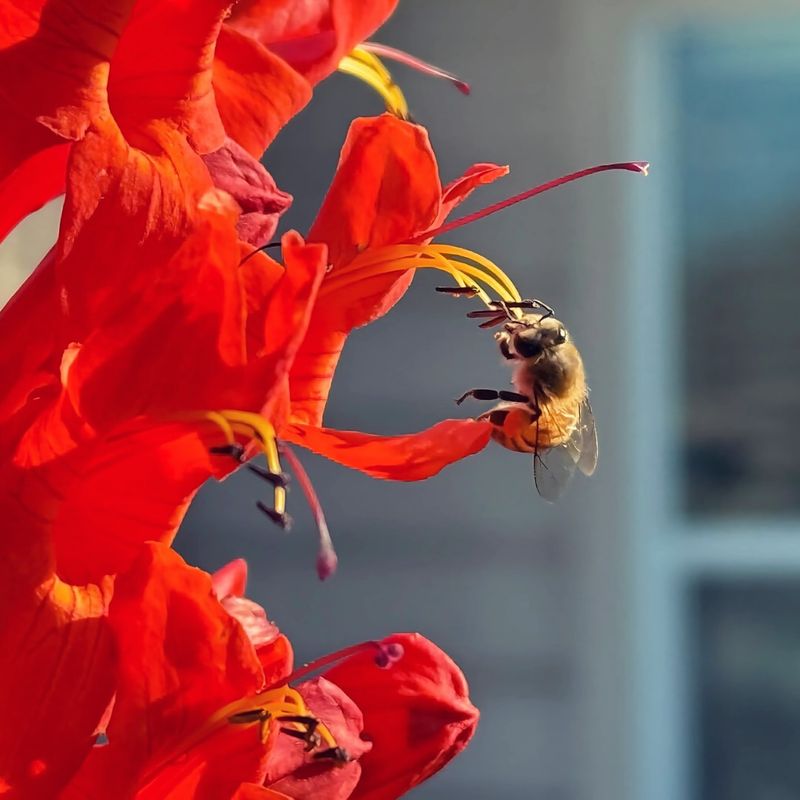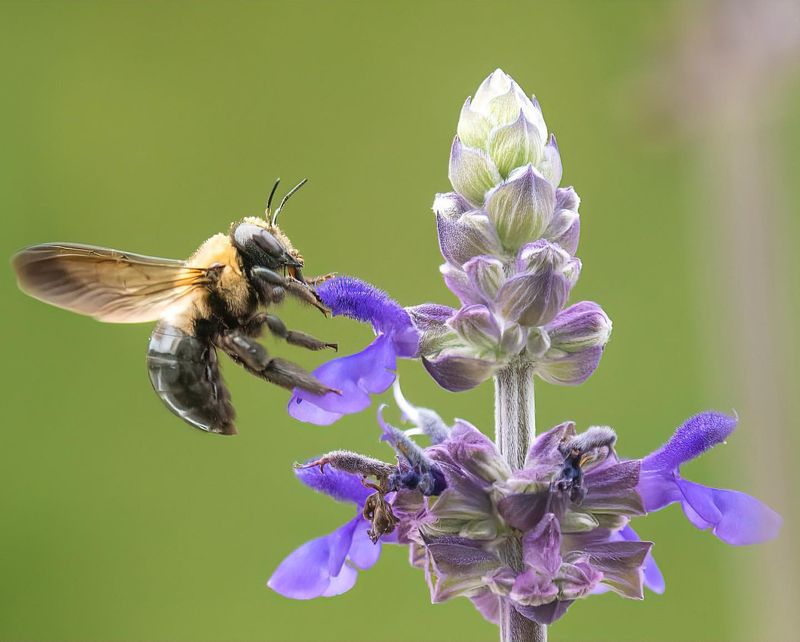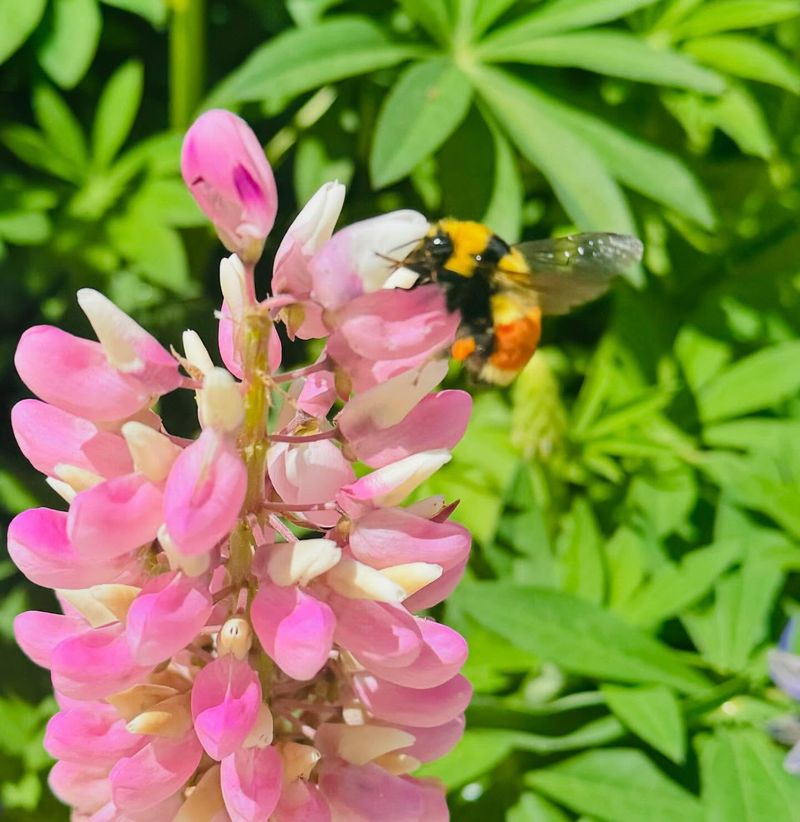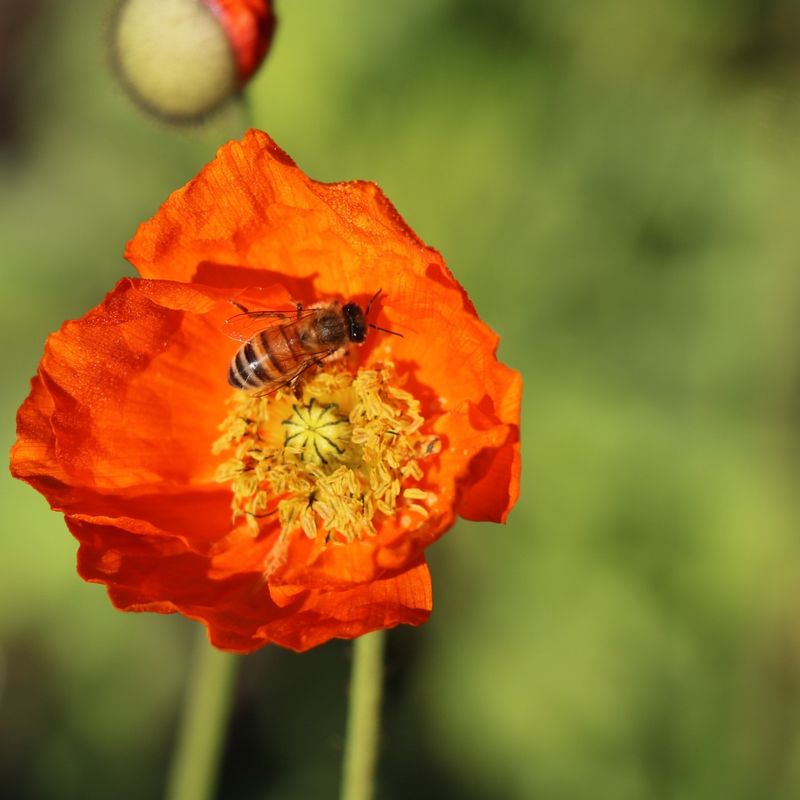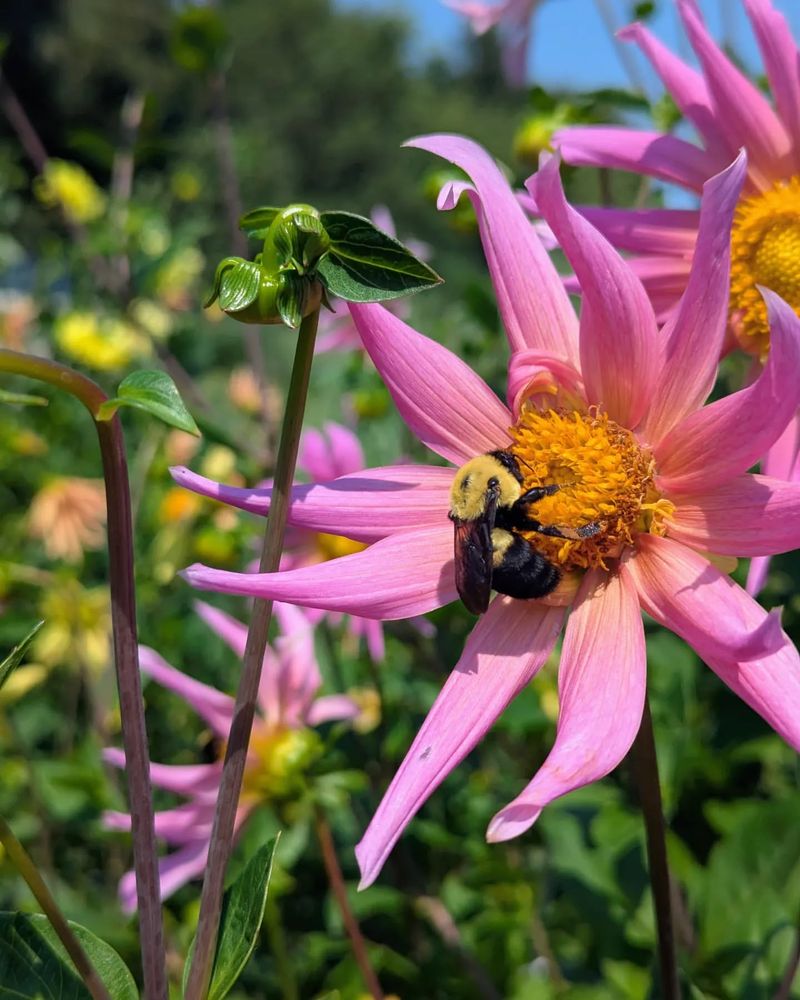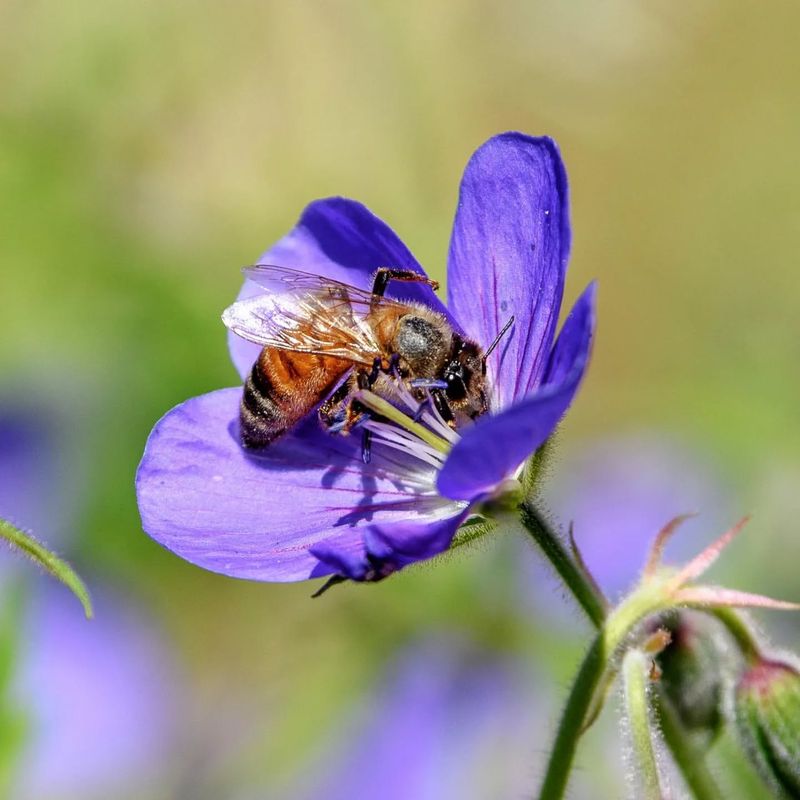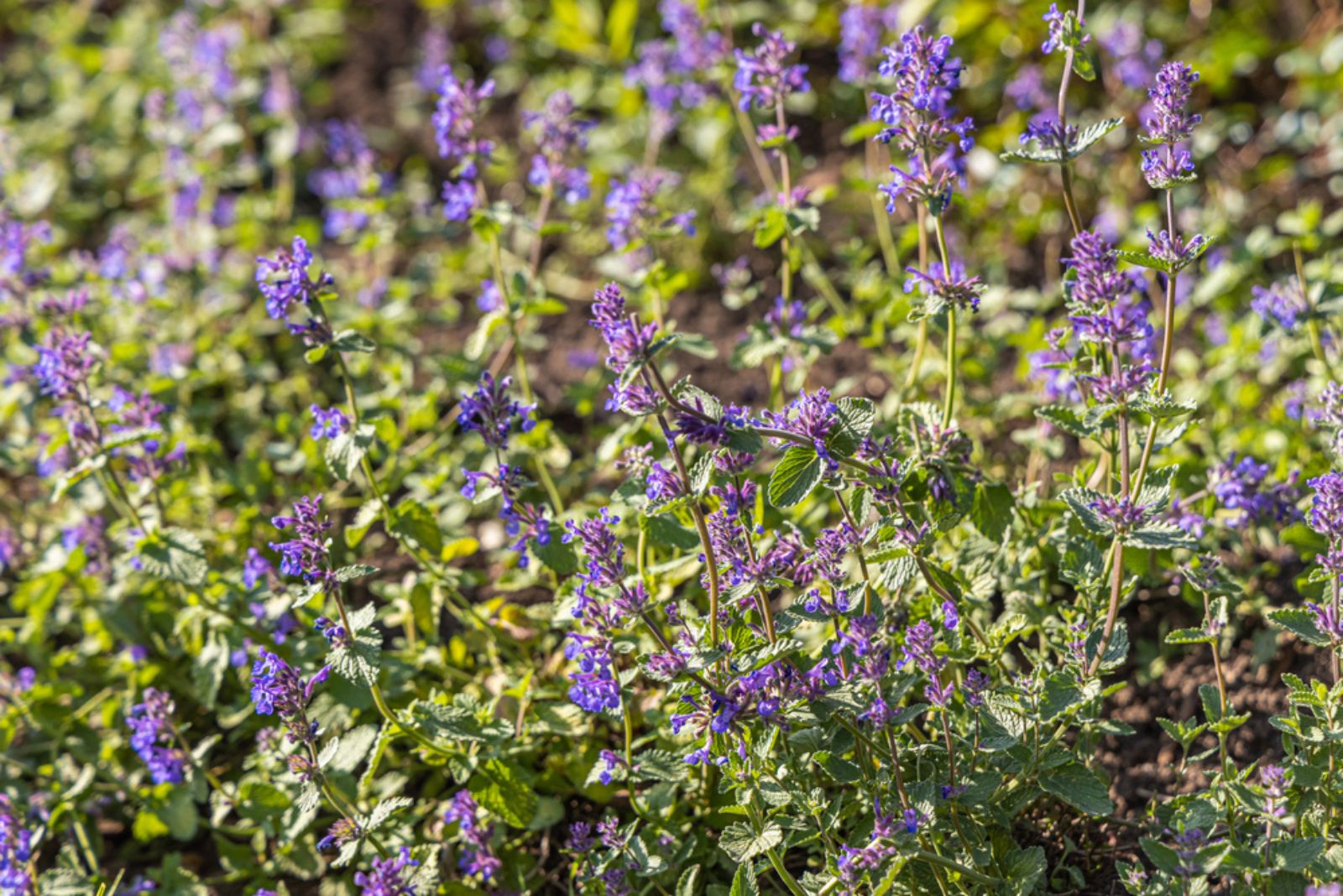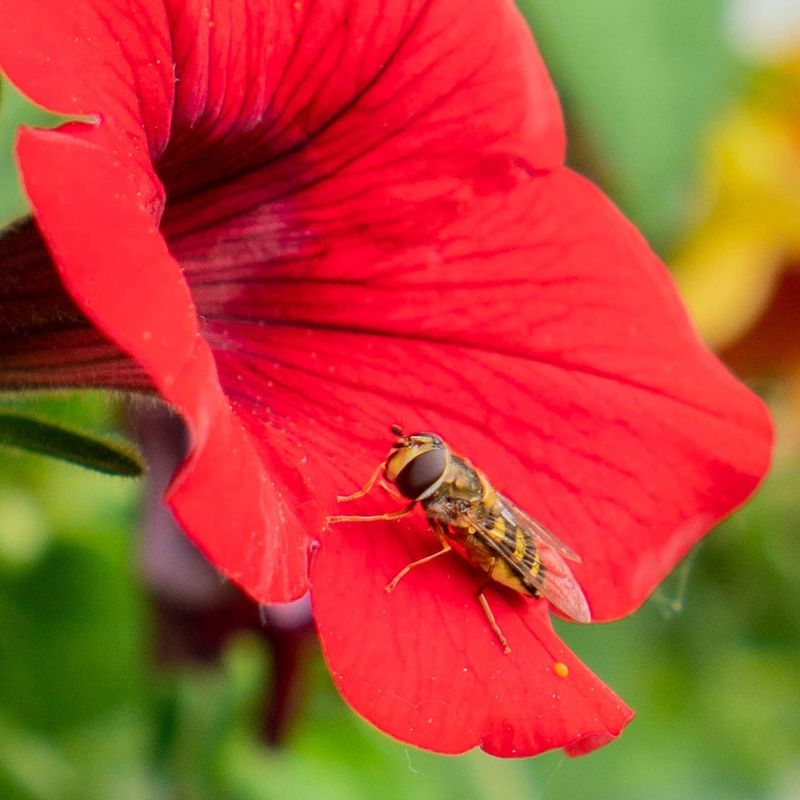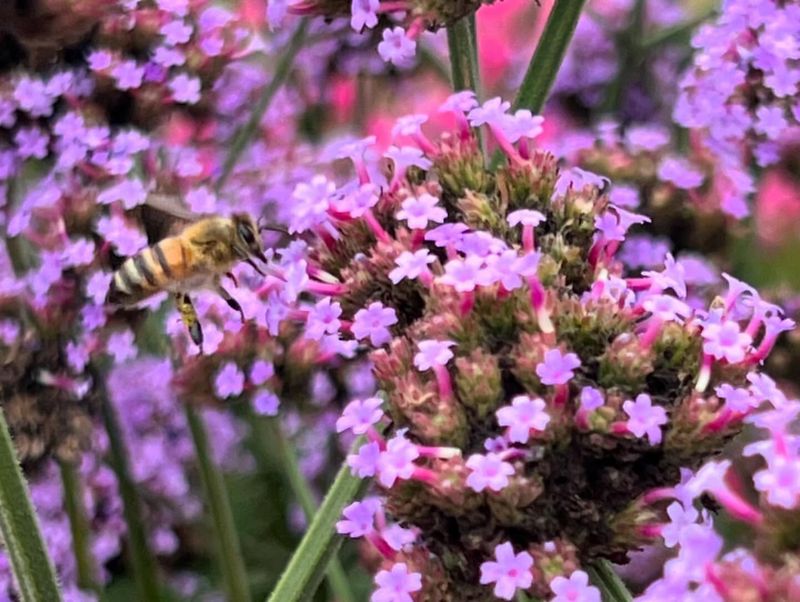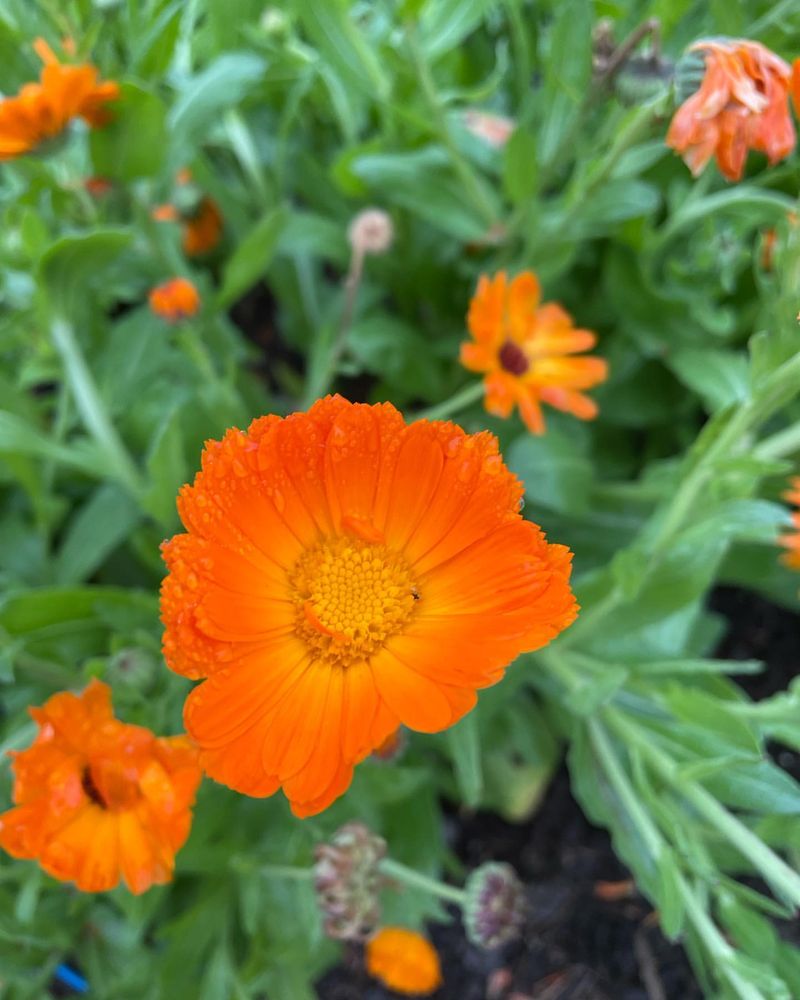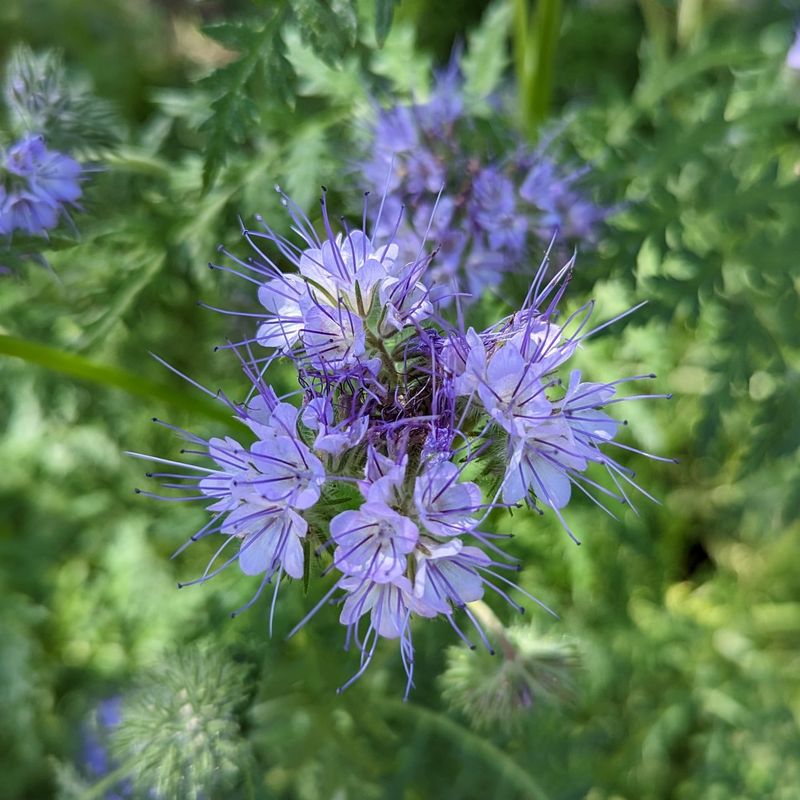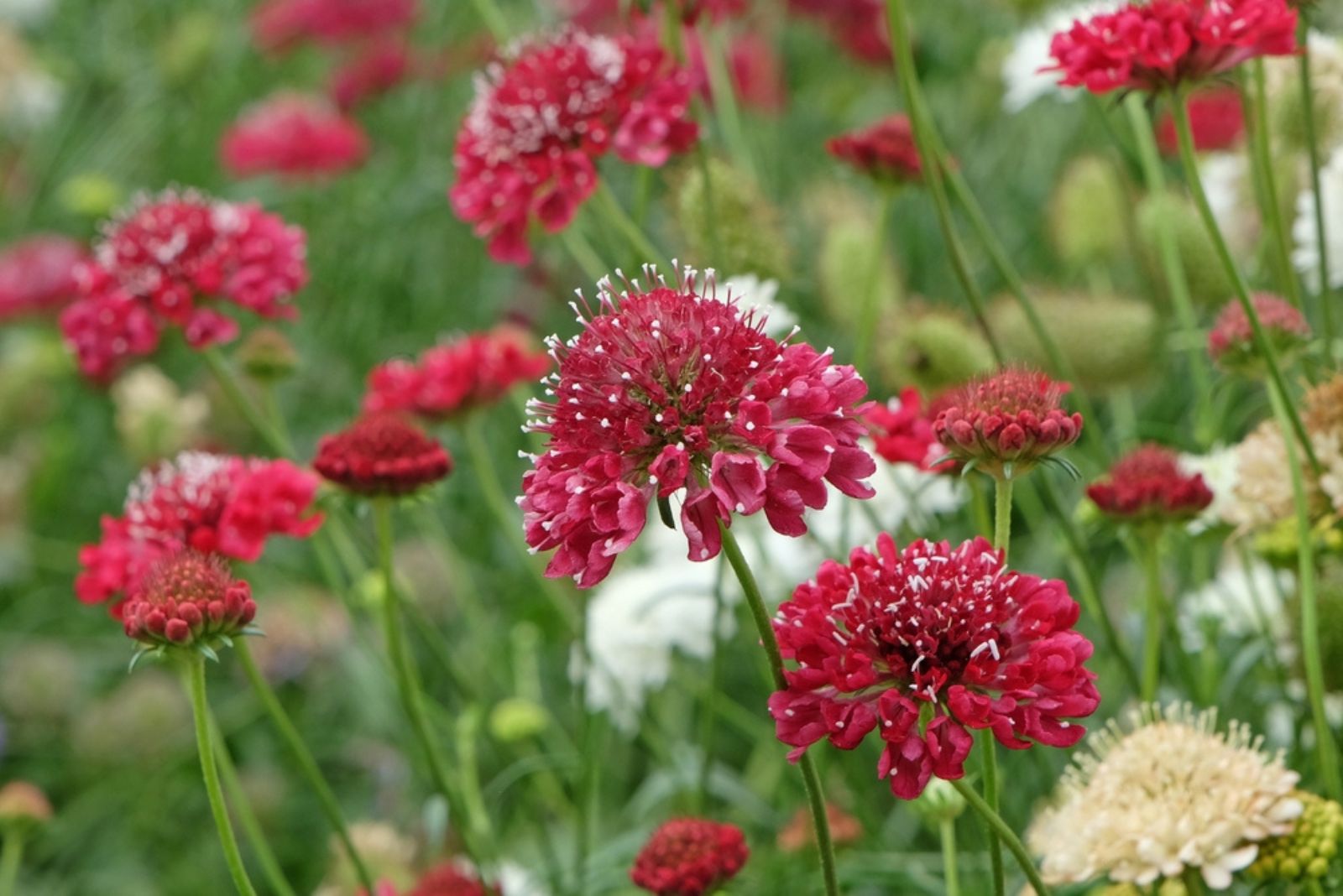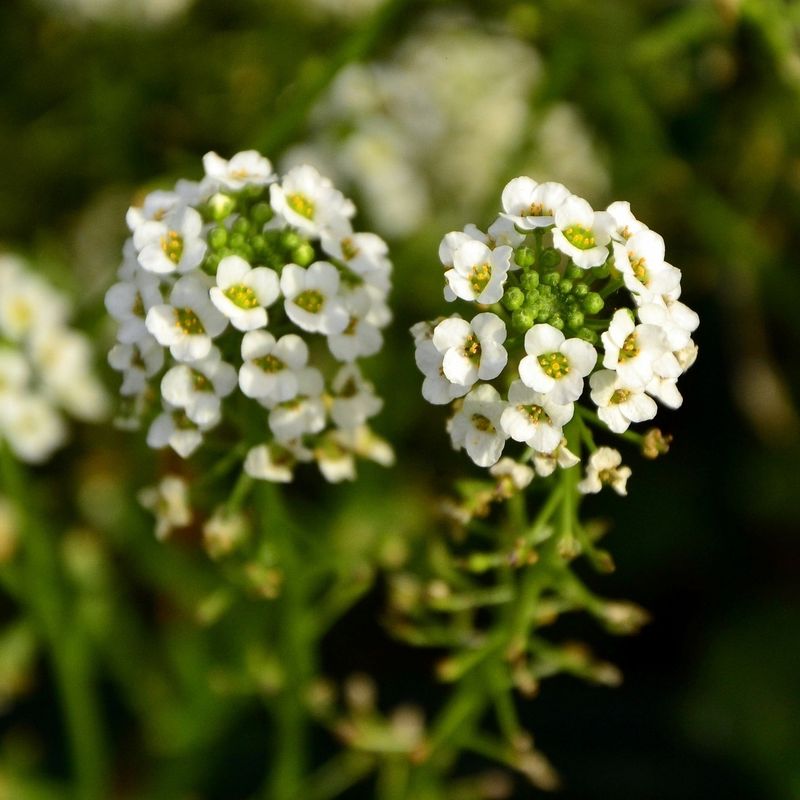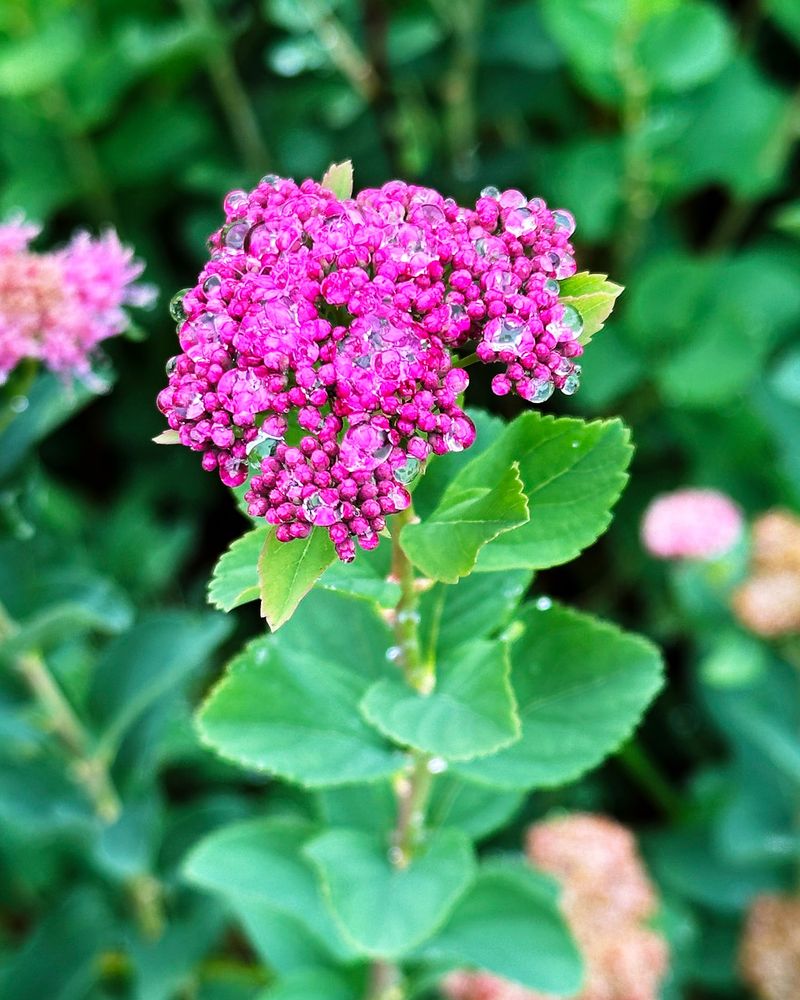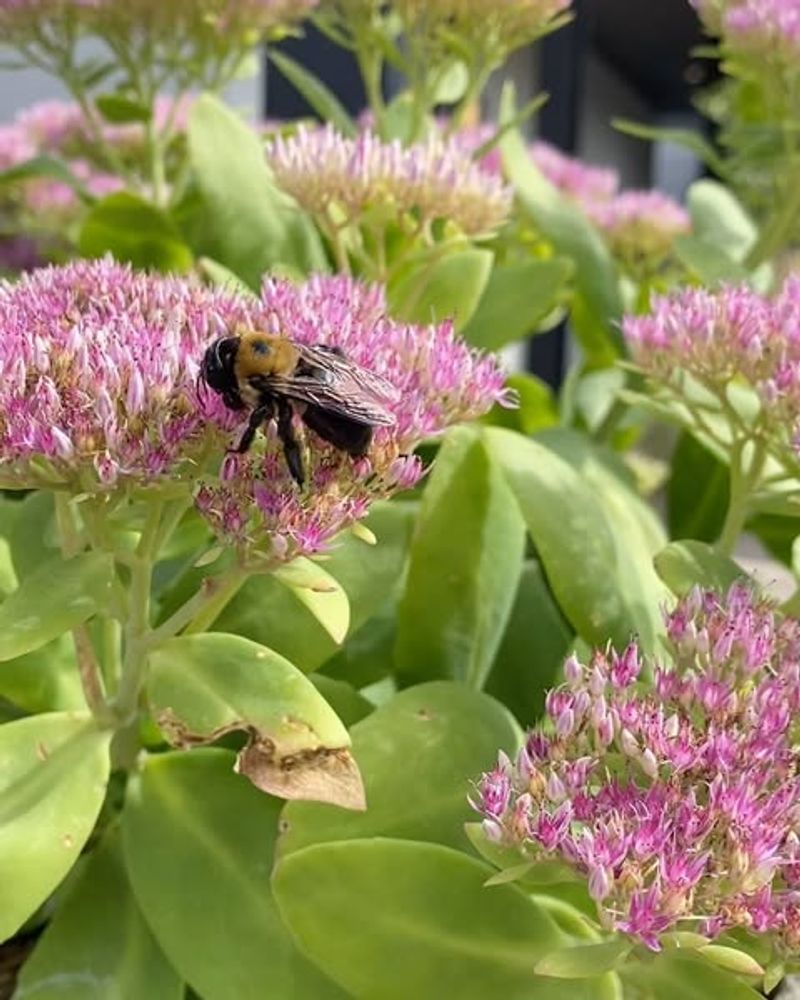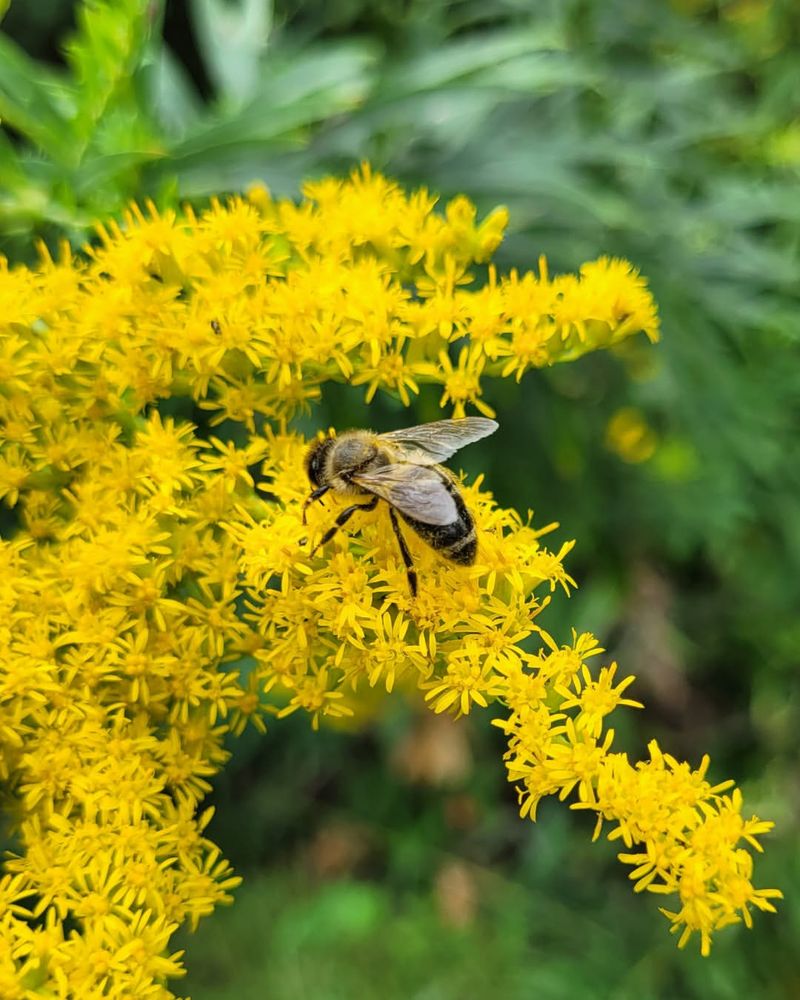Creating a garden that welcomes bees is not only beneficial for the environment but also a delightful way to enhance the beauty and productivity of your outdoor space.
By choosing the right flowers, you can provide these essential pollinators with the nectar and pollen they need to thrive. This guide presents 35 flowers that will make your garden a buzzing haven for bees.
1. Lavender
The gentle hum of bees often fills the air where lavender grows. Lavender, with its fragrant purple spikes, is a favorite among bees.
Plant it in sunny spots to encourage a steady flow of bees seeking nectar. Not only does it attract bees, but it also adds a calming scent to your garden.
Its drought-resistant nature makes it an easy choice for any gardener looking to support local pollinators while enjoying a beautiful and low-maintenance plant.
2. Sunflower
Tall and majestic, sunflowers are a beacon for bees. The bright yellow petals and large centers provide an abundance of nectar.
These flowers are not only a feast for the eyes but also a crucial food source for pollinators.
Sunflowers thrive in well-drained soil and full sun, making them a robust addition to any bee-friendly garden. Their presence ensures bees have ample food supply throughout the flowering season.
3. Coneflower
Standing resilient in the garden, coneflowers attract bees with their vibrant pink and purple hues. Known as Echinacea, these flowers are hardy and drought-resistant.
Their spiky centers are a magnet for bees, providing essential pollen.
Plant coneflowers in groups to create an inviting space for pollinators. They flourish in sunny spots with well-drained soil, offering both beauty and ecological benefits.
4. Bee Balm
Vibrant and aromatic, bee balm is a top choice for attracting bees. These red, tubular flowers are irresistible to pollinators.
Bee balm thrives in moist soil and sunlight, making it a versatile addition to any garden.
Its striking blooms not only provide nectar but also bring a splash of color. By planting bee balm, you support bees while enjoying the lively energy it brings to your landscape.
5. Borage
Known for its star-shaped blue flowers, borage is a bee magnet. This herb provides a continuous supply of nectar throughout its blooming season.
Borage is easy to grow and adapts well to various soil types, making it perfect for any garden setting.
Its edible flowers add a unique touch to salads and garnishes, while its presence ensures bees have a reliable food source all summer long.
6. Cosmos
In a sea of pink and white, cosmos flowers stand out as favorites for bees. These delicate blooms offer plentiful nectar.
Cosmos thrive in full sun and can tolerate poor soil conditions, making them hardy and easy to grow.
Their long-lasting blooms provide a consistent food source for bees. Adding cosmos to your garden ensures a vibrant, pollinator-friendly environment.
7. Zinnia
Bursting with color, zinnias create a lively garden atmosphere. Their bright blooms attract bees eager for nectar.
Zinnias are easy to grow and thrive in warm, sunny conditions. They come in a variety of colors, offering aesthetic diversity.
These flowers not only support bees but also make excellent cut flowers for bouquets. By planting zinnias, you contribute to a thriving ecosystem while beautifying your garden.
8. Aster
Purple asters draw bees with their dainty petals and bright yellow centers. These late-blooming flowers provide essential late-season nectar.
Asters thrive in moist, well-drained soil and full sun. They are a valuable addition to extend the feeding season for bees.
Their subtle beauty adds charm to any garden, ensuring pollinators have a steady food supply as other flowers fade.
9. Marigold
In vibrant shades of orange and yellow, marigolds are a cheerful addition to gardens. These flowers attract bees with their easy-to-access nectar.
Marigolds thrive in sunny locations and are known for their pest-repelling properties.
They are easy to care for and provide a reliable food source for bees. Adding marigolds to your garden supports pollinators while enhancing the landscape with vibrant color.
10. Foxglove
Known for their tall spires, foxgloves are a striking garden addition. Their tubular flowers are favorites among bees, offering ample nectar.
Foxgloves thrive in partial shade and well-drained soil. They add architectural interest to any landscape.
These biennial plants support bees and provide a vertical element to garden designs. Planting foxgloves ensures bees have access to nectar while enhancing your garden’s visual appeal.
11. Black-eyed Susan
Radiant and robust, black-eyed Susans are a bee favorite. Their sunny yellow petals and dark centers attract pollinators.
These flowers are hardy and can tolerate various soil conditions, making them versatile garden additions.
Plant them in sunny spots to encourage pollinator visits. Black-eyed Susans not only beautify your garden but also support the local bee population.
12. Hollyhock
Towering in the garden, hollyhocks create a dramatic backdrop. Their large, colorful blooms are irresistible to bees.
These plants thrive in sunny locations and can reach impressive heights, adding vertical interest.
Hollyhocks are biennials, ensuring a steady supply of nectar during their blooming season. They support bees while providing a stunning display in your garden.
13. Snapdragon
With their whimsical shape, snapdragons add charm to gardens. These flowers are popular with bees, who love their vibrant colors.
Snapdragons thrive in full sun and well-drained soil, making them easy to grow.
Their varied hues and playful forms make them a favorite for garden borders. By planting snapdragons, you ensure bees have a delightful source of nectar while adding character to your garden.
14. Mint
Beyond its culinary uses, mint is a bee-friendly herb. Its small purple flowers provide nectar and attract pollinators.
Mint thrives in moist, well-drained soil and can spread quickly, filling your garden with fresh fragrance.
By planting mint, you support bees and enjoy its aromatic leaves for teas and dishes. Mint offers dual benefits: a flavorful herb and a pollinator magnet.
15. Rosemary
Not just for cooking, rosemary is a delightful addition to bee-friendly gardens. Its small blue flowers are rich in nectar.
Rosemary thrives in well-drained soil and full sun, providing a robust herb option for gardeners.
Its evergreen nature ensures year-round greenery, supporting bees and enhancing your garden’s appeal. By growing rosemary, you offer bees nourishment while enjoying its culinary benefits.
16. Thyme
Tiny yet mighty, thyme plants are valuable for bees. Their small purple flowers are a nectar source for pollinators.
Thyme thrives in sunny, well-drained locations and is a hardy ground cover option.
Planting thyme supports bees while providing a fragrant herb for cooking. Its low-growing habit makes it perfect for borders and rock gardens, enhancing garden aesthetics.
17. Hyssop
With its aromatic leaves, hyssop is an excellent bee attractor. Its blue flower spikes are rich in nectar.
Hyssop thrives in sunny, well-drained areas, offering both ornamental and herbal benefits.
This hardy perennial supports bees and adds vertical interest. By planting hyssop, you provide essential food for pollinators while enjoying its fragrant presence.
18. Clover
Often found in lawns, clover is a crucial plant for bees. Its white and red flowers are rich in nectar.
Clover thrives in various soil types, making it easy to incorporate into any garden.
Allow clover to bloom in your lawn to support bees and add diversity. Its presence not only offers nectar but also improves soil health, benefiting your entire garden ecosystem.
19. Basil
Beyond its culinary use, basil flowers are a bee favorite. Their purple and white blooms offer nectar.
Basil thrives in warm, sunny spots and well-drained soil, making it a versatile herb choice.
By allowing basil to flower, you support pollinators while enjoying its aromatic leaves. Basil serves dual purposes: a kitchen staple and a pollinator helper.
20. Honeysuckle
Climbing and fragrant, honeysuckle is a delight for bees. Its white and yellow flowers offer abundant nectar.
Honeysuckle thrives in well-drained soil and can cover arbors and fences, enhancing garden architecture.
By planting honeysuckle, you provide a feast for pollinators while enjoying its sweet scent. It’s a beautiful way to support bees and add allure to your outdoor space.
21. Salvia
Salvia’s vibrant spikes are a must-have for bee-friendly gardens. These purple blooms are nectar-rich and attract bees.
Salvia thrives in well-drained soil and full sun, ensuring ease of care.
This perennial adds structure and color, supporting pollinators throughout the blooming season. Planting salvia benefits bees and enhances the visual appeal of your garden.
22. Lupine
Majestic and colorful, lupines are a bee’s paradise. Their tall flower spikes provide ample nectar.
Lupines thrive in well-drained soil and sunny locations, adding vertical beauty.
These perennials not only support bees but also improve soil nitrogen levels. Planting lupines ensures a rich food source for pollinators and a vibrant garden display.
23. Poppy
Delicate yet bold, poppies are a stunning garden addition. Their red blooms attract bees seeking pollen.
Poppies thrive in sunny, well-drained areas and can self-seed, ensuring continuous growth.
By planting poppies, you provide a pollen-rich environment for bees while enjoying their vivid beauty. These flowers support pollinators and bring a splash of color to your garden.
24. Dahlia
With their intricate petals, dahlias are a visual feast. These blooms attract bees with their rich nectar supply.
Dahlias thrive in sunny locations and well-drained soil, offering a variety of colors and shapes.
By planting dahlias, you support pollinators while adding dramatic flair to your garden. Their presence ensures bees have an ample food source during their flowering period.
25. Geranium
Bright and versatile, geraniums are a favorite for bees. Their colorful flowers offer nectar and attract pollinators.
Geraniums thrive in sunny or partially shaded areas, making them adaptable garden choices.
By planting geraniums, you support bees and enjoy their continuous blooms. These flowers add charm and color, creating a welcoming environment for pollinators.
26. Catmint
Catmint, with its aromatic leaves, is a bee-friendly plant. Its purple flowers are rich in nectar.
This hardy perennial thrives in sunny, well-drained areas and is drought-resistant.
By planting catmint, you provide a reliable food source for bees while enjoying its fragrant presence. It’s an excellent choice for borders and cottage gardens, supporting pollinators and enhancing beauty.
27. Hibiscus
Tropical and bold, hibiscus is a treat for bees. Its large, colorful flowers offer abundant nectar.
Hibiscus thrives in warm climates with well-drained soil, adding exotic beauty to gardens.
By planting hibiscus, you support pollinators while enjoying their vivid blooms. These flowers create a tropical atmosphere and ensure bees have a rich nectar source.
28. Verbena
Petite yet impactful, verbena is a must-have for bee gardens. Its purple blooms are a nectar source.
Verbena thrives in full sun and well-drained soil, making it a low-maintenance choice.
By planting verbena, you provide nourishment for bees while adding color. Its long flowering season supports pollinators and enhances garden aesthetics.
29. Calendula
Cheerful and useful, calendula is adored by bees. Its bright orange flowers offer nectar and pollen.
Calendula thrives in sunny locations and well-drained soil, making it easy to grow.
By planting calendula, you support bees while enjoying its medicinal and culinary uses. These flowers add color and vibrancy to gardens, attracting pollinators and offering herbal benefits.
30. Phacelia
Often used as a cover crop, phacelia is a bee favorite. Its blue flowers provide ample nectar.
Phacelia thrives in various soil types and can improve soil health, making it versatile.
By planting phacelia, you support pollinators and enhance soil quality. Its blooms create a bee-friendly environment, ensuring a rich food source and ecological benefits.
31. Scabiosa
With pincushion-like flowers, scabiosa is a charming addition. Its light blue blooms attract bees with nectar.
Scabiosa thrives in sunny areas with well-drained soil, offering long-lasting beauty.
By planting scabiosa, you support pollinators while enjoying unique floral forms. These flowers add elegance and ensure bees have access to necessary resources.
32. Sweet Alyssum
Low-growing and fragrant, sweet alyssum is perfect for bees. Its white flowers are a nectar source.
Sweet alyssum thrives in sunny spots and well-drained soil, providing ground cover.
By planting sweet alyssum, you support pollinators while enjoying its sweet scent. These flowers create a bee-friendly habitat, enhancing garden beauty and ecological value.
33. Spirea
Spirea, with its clustered blooms, is ideal for bees. Its pink flowers are rich in nectar.
This hardy shrub thrives in sunny, well-drained areas, offering structure and color.
By planting spirea, you support pollinators and add beauty to your garden. These flowers provide a dependable food source, ensuring bees thrive throughout their blooming period.
34. Sedum
Succulent and sturdy, sedum is a bee haven. Its pink flowers attract pollinators with nectar.
Sedum thrives in well-drained, sunny locations and is drought-resistant.
By planting sedum, you support bees while adding texture to your garden. These flowers thrive in rock gardens and borders, providing ecological benefits and visual interest.
35. Goldenrod
Often mistaken for causing allergies, goldenrod is crucial for bees. Its yellow blooms offer nectar.
Goldenrod thrives in various conditions, making it adaptable to different gardens.
By planting goldenrod, you support pollinators and enjoy its late-season color. These flowers ensure bees have a food source as other blooms fade, enhancing biodiversity.

